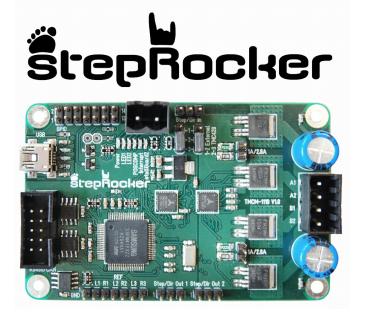- Home
- Symmetry Blog
- 'Trinamic Surfing 'Automation' Wave' Part 1 of 2
'Trinamic Surfing 'Automation' Wave' Part 1 of 2
About Symmetry Electronics
Established in 1998, Symmetry Electronics, a Division of Braemac, is a global distributor of electronic components and systems. Combining premier components and comprehensive value-added services with an expert in-house engineering team, Symmetry supports engineers in the design, development, and deployment of a broad range of connected technologies.
Exponential Technology Group Member
Acquired by Berkshire Hathaway company TTI, Inc. in 2017, Symmetry Electronics is a proud Exponential Technology Group (XTG) member. A collection of specialty semiconductor distributors and engineering design firms, XTG stands alongside industry leaders TTI Inc., Mouser Electronics, and Sager Electronics. Together, we provide a united global supply chain solution with the shared mission of simplifying engineering, offering affordable technologies, and assisting engineers in accelerating time to market. For more information about XTG, visit www.xponentialgroup.com.
“Automation is a mega trend,” whether applied the factory floor or the smart home, drones, security cameras or 3D printers, Michael Randt, founder and CEO of Trinamic Motion Control, told us recently.
Sensors and connectivity – represented in the Internet of Things (IoT) – are key enablers for automation, making it easy for users to remotely collect data and control devices.
But what about actuators and motors?
Often overlooked in the automation wave is the role motion-control technologies play in “connecting the physical and digital worlds,” Randt explained. As important as sensing, data collection and analysis in the cloud are for automation, “the physical control of the real world isn’t going away.” Behind every smart IoT device, there is a motion-control chip or module that must work efficiently and quietly.
Trinamic (Hamburg, Germany), founded in 2004, specializes in motion controls. Although hardly a household name like Texas Instruments, the German company has a long history of handling a broad range of motors for various applications. “We know motors and we have a singular focus on motion controls,” Randt said.
In its early days, dealing with a variety of motors, Randt said Trinamic hit upon the idea of designing motion control technology in hardware. “We wanted to make acceleration and deceleration [in motion] much more efficient, higher resolution, and more dependable. Rather than controlling motion in software, how about doing it in hardware?, we thought," said Randt.

1-axis controller/driver 2.8A/24V, coolStep™, with encoder interface, S/D in & out
Motion-control architecture
This idea seems to go against the grain, especially as the whole tech world adopts the faith that anything done in hardware can be done better in software. But to actually control motors that won’t lose step and won’t sacrifice resolution or torque, motors that work efficiently, smoothly, and quietly, you still need actual hardware, Trinamic insisted. The company’s brainstorm was its own motion-control architecture, on which the company has developed unique motion-control hardware for different applications.
Trinamic puts it thus: “The architecture determines the structure, behavior, and performance of a system. For motor drive applications, selection of the right electronic components has a tremendous impact on the system's ultimate performance.”
Trinamic divided power-electronics design into three blocks: a microcontroller that accepts digital processing, a driver to translate digital signals into electrical power and a driver that consists of the gate driver and power switches.
This building block approach works by simplifying the development process, increasing the reliability and quality of the results, as Trinamic explained. More important, Trinamic has been able to develop components optimally suited for each respective task.
For additional Trinamic product information or technical support, contact Symmetry Electronics, and authorized distributor of industry leading wireless, audio/video and embedded chips modules and development tools, call (877) 466-9722.
